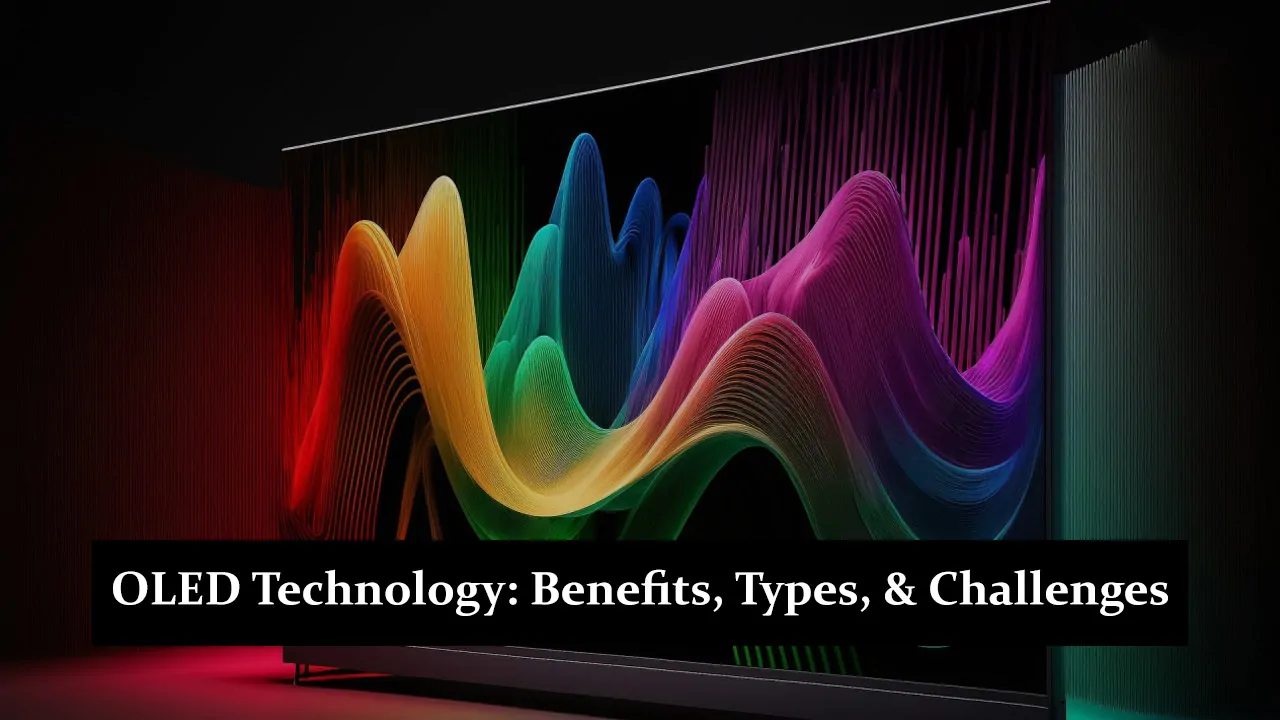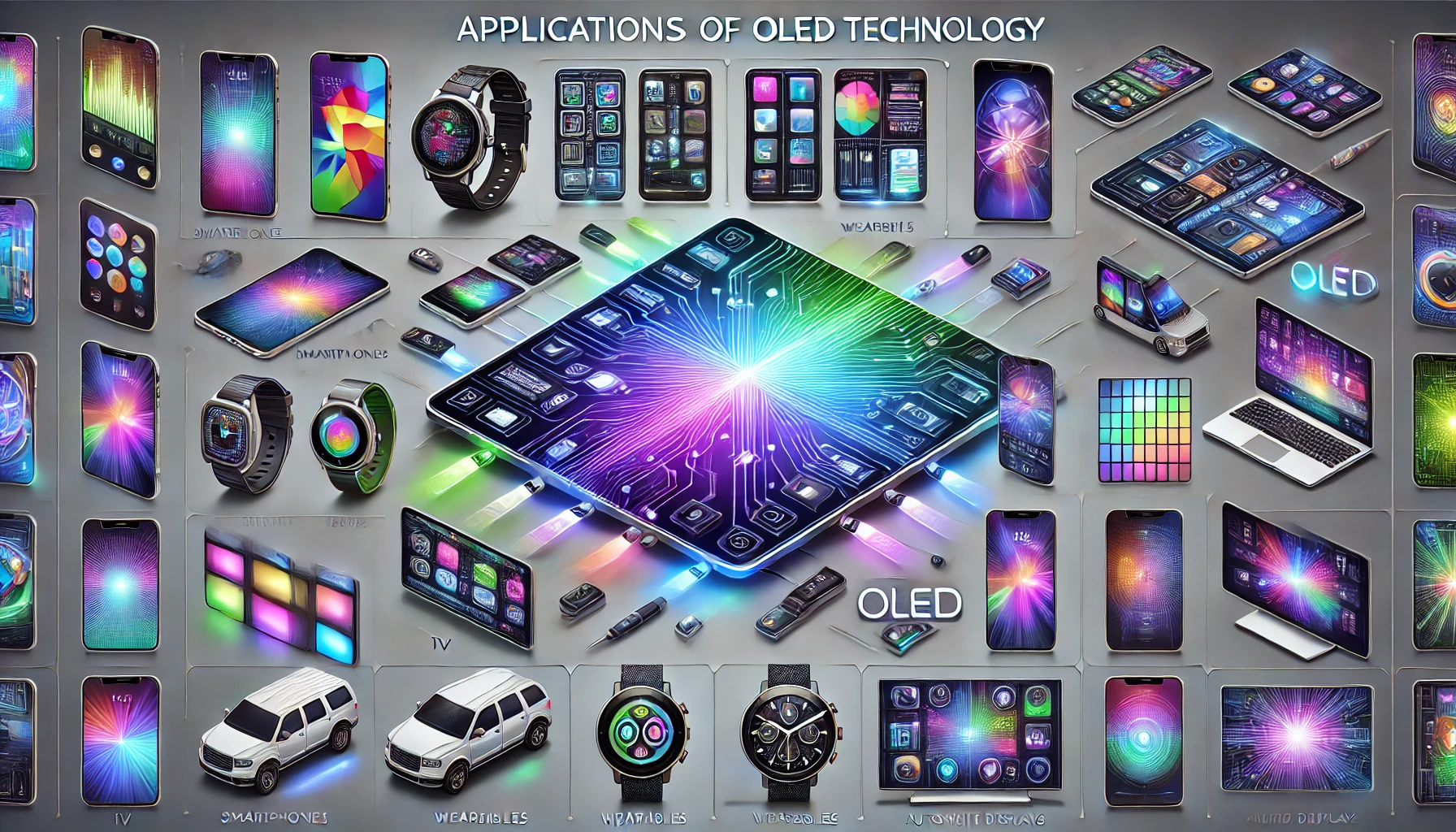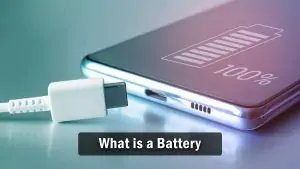OLED (Organic Light-Emitting Diode) is a cutting-edge display technology that produces stunning visuals by emitting light directly from each pixel. OLED displays can produce deeper blacks and more vibrant colours, unlike traditional LCDs or LEDs requiring backlighting. This makes them perfect for devices like smartphones, TVs, and smartwatches. OLED technology is also more energy-efficient and offers better contrast and viewing angles, setting it apart from other display technologies. As OLED continues to evolve, it’s quickly becoming the go-to choice for high-quality screens.
How OLED Displays Work
OLED display technology uses organic compounds that emit light when an electric current passes through them. Each pixel in an OLED display comprises layers, including organic materials sandwiched between electrodes. When electricity flows through the layers, the organic compounds light up, allowing each pixel to control its brightness individually. This self-emissive display technology means OLED pixels can turn completely off, producing true blacks and exceptional colour contrast, unlike traditional screens that need a backlight. This makes OLED displays visually stunning and highly efficient.
Advantages of OLED
- True black levels: Each pixel can turn off completely, creating perfect blacks and enhancing overall contrast.
- Energy efficiency: OLED displays use less power, especially when showing darker images, as pixels are only lit where needed.
- Superior colour contrast: OLED offers vibrant colours with higher contrast than LED, delivering a richer visual experience.
- Wider viewing angles: Unlike LED displays, the image quality and colours remain consistent even when viewed from the side.
- Thin and flexible design: OLED displays are thinner and more flexible, allowing for sleek, lightweight devices and innovative designs.
Types of OLED Displays
Active-Matrix OLED (AMOLED)
AMOLED is a more advanced type of OLED display often used in mobile phones and tablets. It offers better power efficiency, faster response times, and higher refresh rates, making it perfect for high-resolution and touch-sensitive screens. This is why AMOLED is so popular in modern smartphones.
Passive-Matrix OLED (PMOLED)
PMOLED is simpler and is generally used in smaller displays, such as those on fitness trackers or simple wearables. While easier to manufacture, PMOLED is less efficient and doesn’t support larger screens or high-performance applications like AMOLED.
OLED in TVs and Flexible Screens
OLED technology has made its way into large displays like TVs, offering unmatched picture quality with deep blacks and vibrant colours. OLED’s flexibility allows for the development of foldable or curved screens, making it ideal for innovative devices and designs.
Applications of OLED Technology
OLED technology is widely used in various devices, including smartphones, TVs, and smartwatches, thanks to its ability to produce stunning visuals with deep blacks and vibrant colours. Smartphones benefit from OLED’s power efficiency and slim design, while OLED TVs offer exceptional picture quality for home entertainment. Smartwatches also use OLED for compact screens, providing clear visuals with minimal battery consumption. OLED’s flexibility has enabled the development of foldable devices and wearables, showcasing its versatility in creating innovative products with unique designs. These applications highlight OLED’s growing presence in modern technology.
Challenges Facing OLED Technology
- Burn-in issues: OLED displays are prone to image retention or burn-in, where static images can leave a permanent mark on the screen over time.
- Lifespan: OLED screens, especially blue OLED pixels, tend to degrade faster than those in LCD or LED displays, impacting their lifespan.
- Higher manufacturing costs: Producing OLED displays is more expensive than LCD and LED displays, making OLED devices pricier for consumers.
- Environmental impact: The organic materials used in OLED screens may pose sustainability challenges, and OLED manufacturing generates more waste than other technologies.
OLED vs. Other Display Technologies
| Feature | OLED | LCD | LED | QLED |
| Picture Quality | Superior, true blacks, vibrant colors | Decent but lacks deep blacks | Good, with bright images but less contrast | Excellent, bright and vivid colours |
| Brightness | Not as bright as LED or QLED | Bright but can have poor contrast | Very bright, suitable for well-lit rooms | Extremely bright, ideal for bright environments |
| Colour Accuracy | Exceptional, rich and true-to-life | Moderate colours can be less vivid | Good, but not as accurate as OLED | Great, with more vibrant and sharp colours |
| Viewing Angles | Excellent, wide angles without colour loss | Limited colour shifts at angles | Moderate, slight colour loss at angles | Good, better than LED but not as good as OLED |
| Power Efficiency | Very efficient, especially with dark content | Moderate power consumption | Energy-efficient, especially with bright content | More power-hungry than OLED |
| Lifespan | Can suffer from burn-in over time | Long lifespan | Long lifespan | Longer lifespan than OLED and less prone to burn-in |
| Price | Higher, due to advanced technology | Generally Affordable | More expensive than LCD | More expensive than both LCD and LED |
| Pros | True blacks, thin design, flexible displays | Affordable, widely available | Bright displays, long lifespan | Brightness, vivid colours, long lifespan |
| Cons | Expensive, risk of burn-in | Inferior blacks, lower contrast | Colors are less accurate than OLED | Higher price still not as deep blacks as OLED |
Conclusion
OLED technology offers many benefits, such as true blacks, superior colour contrast, and energy efficiency, making it stand out among other display technologies. With its flexibility and potential for innovation in foldable and curved displays, OLED is poised to shape the future of visual experiences. As it continues to evolve, addressing challenges like burn-in and cost, OLED may become the dominant choice for high-quality screens. Exploring OLED devices is worth considering for those seeking an exceptional visual experience.
FAQs
What is OLED?
OLED (Organic Light-Emitting Diode) is a display technology in which each pixel emits its light, producing vivid colours and deep blacks without a backlight.
How does OLED compare to LCD and LED?
OLED offers superior picture quality, true blacks, and better colour contrast than LCD and LED, which rely on backlighting. OLED also has wider viewing angles and more energy efficiency but tends to be more expensive.
Does OLED have burn-in problems?
OLED displays can suffer burn-in, where static images leave permanent marks over time. However, this can be minimised with careful usage, and advancements in technology are helping to reduce the risk.





